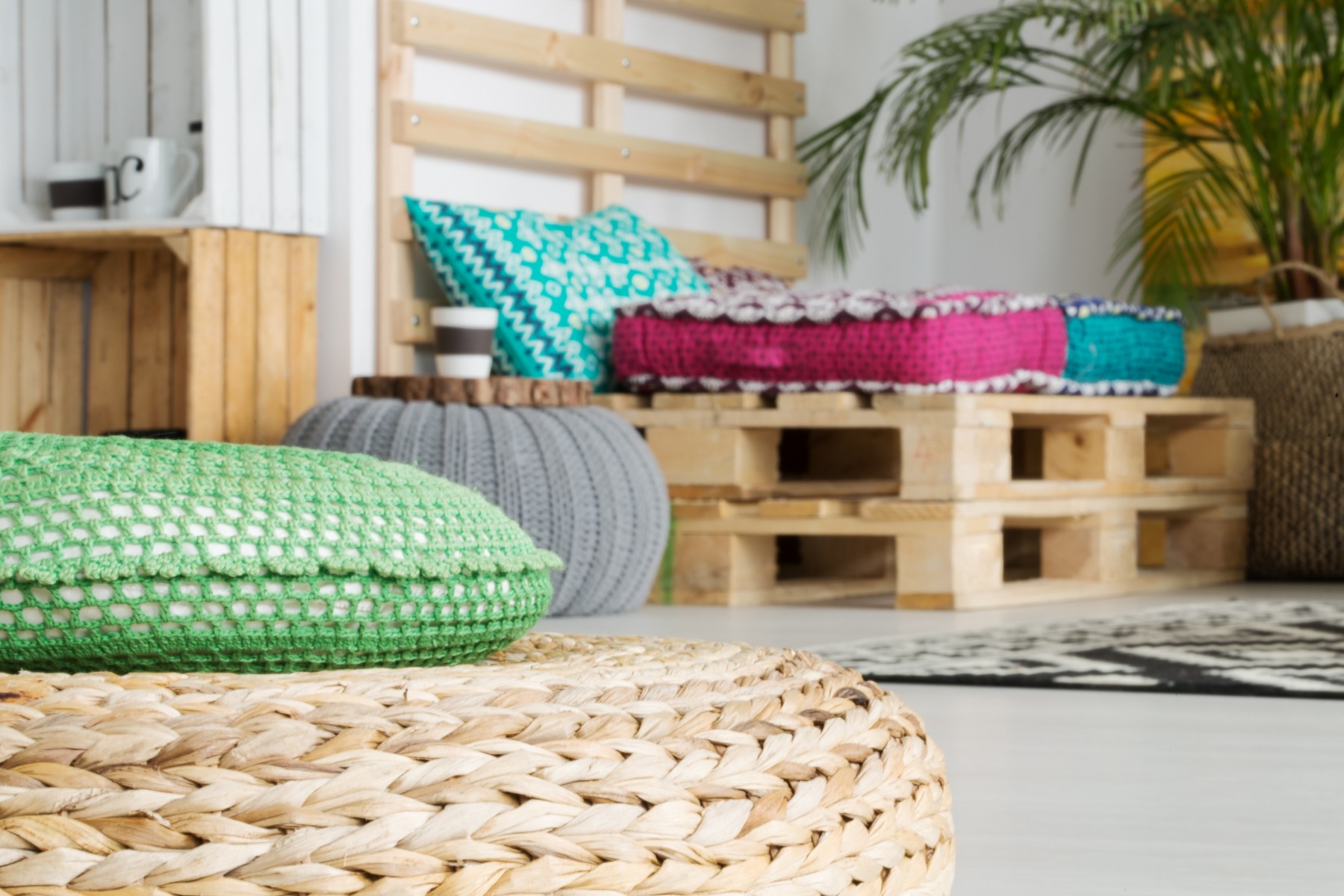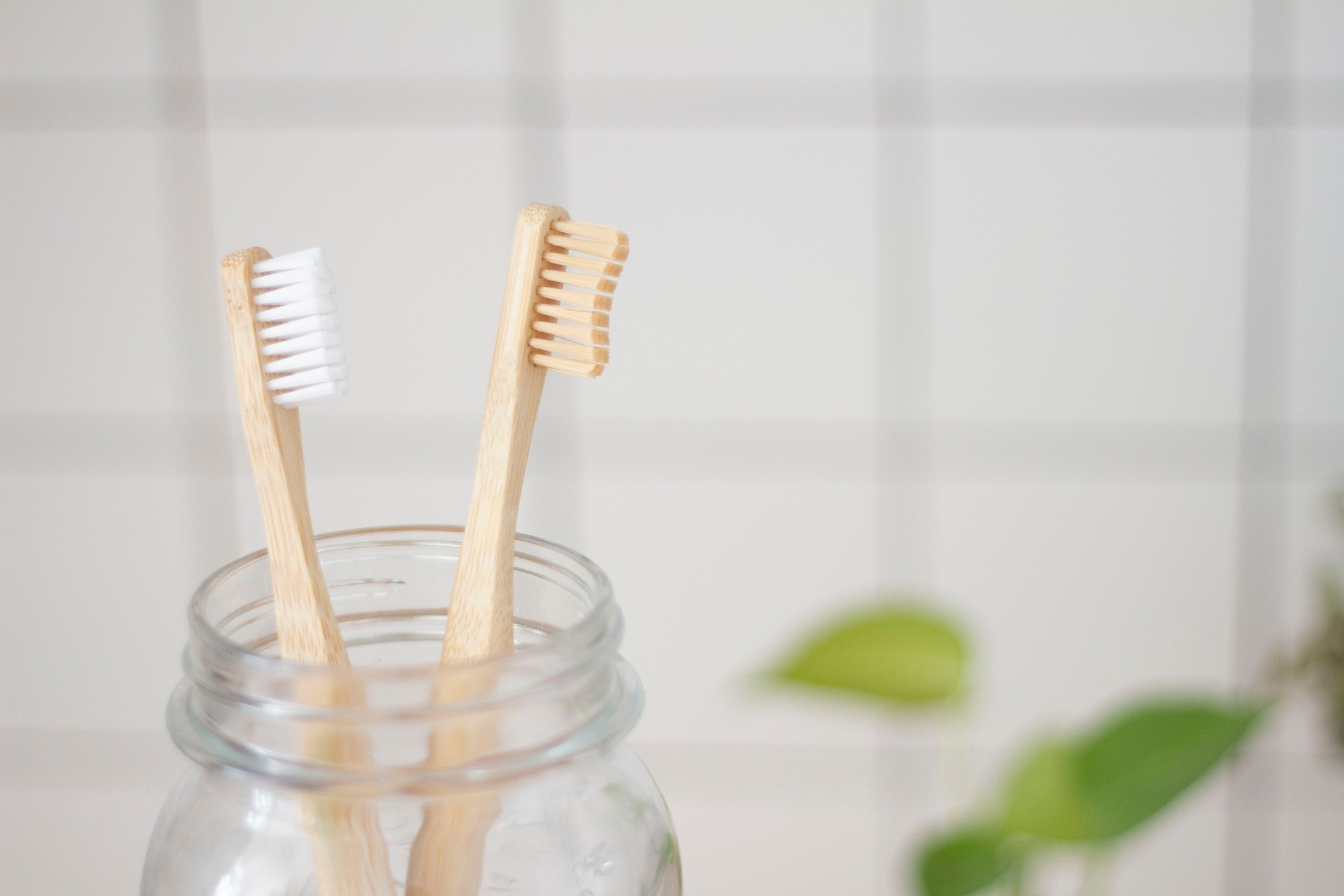
Whether you are just starting out on your eco-friendly journey or are looking for new ideas you may not have thought of, we share some of our tips on how to make your home more eco-friendly. From small changes to larger projects, these ideas are sure to inspire you to revamp your space and help the planet.
Fill your home with lifelong items, not single-use or disposable
Single-use products are one of the biggest issues facing our culture right now, and you're sure to have heard about it. When it comes to our homes, a lot of things we keep hold of for a long time but trying to lengthen the life of everything in your house is a great way to take care of the environment.
We spoke to Yanar the Health and Wellness Editor at Brighter Shade of Green, who gave us a great suggestion for shopping responsibly: "Shop second-hand, vintage and preloved where possible. Buying crockery, glassware and other living items in this way not only reduces your ecological footprint, but saves things from going to landfill and prolongs the life of products. You also get to enjoy a unique item, too."
And equally, if there are items that are no longer bringing you joy, instead of taking them to the dump or binning them, could you donate them? If not, maybe you could pass them on to someone you know, or even upcycle them into something else?
Upgrade your insulation
As a nation, we spend a fortune heating our homes during those cold, British winters and, for those with poor insulation, a lot of that heat can escape our homes through the walls and roof. It can be a larger project, but by upgrading your insulation you can save energy and money in the long run.
Green Business Watch explains: "Insulation offers a number of easy wins for the homeowner. It is a relatively simple and low-cost way to get a warmer home and save on those ever-increasing energy bills. A simple measure like insulating your hot water cylinder with a jacket could save you over £100 a year on an uninsulated tank. Even topping up the insulation on your hot water tank by replacing 25mm with an 80mm jacket would save between £25 and £35 per year. That's more than the cost of the jacket saved, in the first year.
"A measure like topping up your loft insulation is more costly but the Energy Savings Trust estimates that loft insulation is effective for at least 42 years. With 25% of your heat loss escaping through your roof, you can start enjoying a warmer home this winter knowing that reduced bills will more than repay your investment over the coming years."

Incorporate houseplants and greenery
Houseplants are wonderful things. They can help lift our mood, make our spaces look more beautiful and release oxygen into our homes. And recently, they have been a major interior design trend. It doesn't cost a lot or take a lot to look after a houseplant, and it is great for the environment.
Yanar told us: "Surround yourself with plants. The benefits of houseplants on mood and well-being has been researched and proven. The caring and tending to houseplants also cultivates awareness for the natural world. If you don't know where to start, I recommend picking up Bloom Magazine, a modern take on gardening, plants and nature."
What's more, if you are looking for practicality from everything in your home, then why don't you opt for cultivating your own herb garden? You can pick up living herbs in most supermarkets for a small amount of money so you can have fresh basil or mint whenever you need it.
Install eco-friendly heating systems
As well as reducing the spend and environmental impact of your heating by upgrading your insulation, you can also look at installing a more eco-friendly heating system. With a renewable heating system, not only will your heating be better for the environment, but it will also mean you can benefit from the Domestic Renewable Heat Incentive.
This means, for those who fit the criteria, you can actually receive quarterly payments from the government based on the amount of clean, green, renewable heat your system is producing.

Choose one room and focus on that
Whether you are just getting started with your eco-friendly lifestyle, or are looking to teach it to your children, one great way to start is to focus on making one room in your house as eco-friendly as possible. Two great places to pick are your bathroom or kitchen, as both spaces often have a lot of unnecessary waste, water usage and single-use items.
You could even visit our bathroom shop in Exeter to find some great, eco-friendly upgrades for your space.
We spoke to the teams at Let's Grow Wild who told us: "Choose one room, such as the kitchen or bathroom, and make eco-friendly swaps to things you use every day. Use washing up soap bars instead of buying washing up liquid in plastic bottles, choose green alternatives to cling film and tin foil, and natural coconut or loofah scourers over plastic scourers that send small pieces of plastic into the water systems. There are many small swaps that are budget-friendly and can really make a difference!"
How to make your home more eco-friendly:
- Fill your home with lifelong items, not single-use or disposable
- Upgrade your insulation
- Incorporate houseplants and greenery
- Install eco-friendly heating systems
- Choose one room and focus on that
So there are some of our tips on making your home more eco-friendly. Whether you are making small changes or going for a larger project, making your home as energy efficient as possible can not only save you money in the long run but can help the planet as well.
For more building tips and insights, check out our latest news page.
